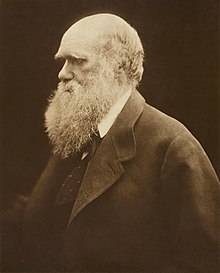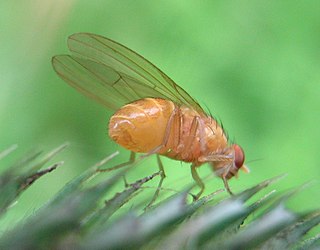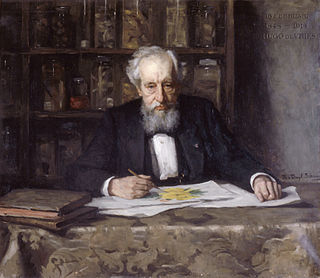
This is a list of topics in evolutionary biology.

This is a list of topics in evolutionary biology.
abiogenesis – adaptation – adaptive mutation – adaptive radiation – allele – allele frequency – allochronic speciation – allopatric speciation – altruism – anagenesis – anti-predator adaptation – applications of evolution – aposematism – Archaeopteryx – aquatic adaptation – artificial selection – atavism
Henry Walter Bates – biological organisation – Brassica oleracea – breed
Cambrian explosion – camouflage – Sean B. Carroll – catagenesis – gene-centered view of evolution – cephalization – Sergei Chetverikov – chronobiology – chronospecies – clade – cladistics – climatic adaptation – coalescent theory – co-evolution – co-operation – coefficient of relationship – common descent – convergent evolution – creation–evolution controversy – cultivar – conspecific song preference
Darwin (unit) – Charles Darwin – Darwinism – Darwin's finches – Richard Dawkins – directed mutagenesis – Directed evolution – directional selection – Theodosius Dobzhansky – dog breeding – domestication – domestication of the horse
E. coli long-term evolution experiment – ecological genetics – ecological selection – ecological speciation – Endless Forms Most Beautiful – endosymbiosis – error threshold (evolution) – evidence of common descent – evolution – evolutionary arms race – evolutionary capacitance
Evolution: of ageing – of the brain – of cetaceans – of complexity – of dinosaurs – of the eye – of fish – of the horse – of insects – of human intelligence – of mammalian auditory ossicles – of mammals – of monogamy – of sex – of sirenians – of tetrapods – of the wolf
evolutionary developmental biology – evolutionary dynamics – evolutionary game theory – evolutionary history of life – evolutionary history of plants – evolutionary medicine – evolutionary neuroscience – evolutionary psychology – evolutionary radiation – evolutionarily stable strategy – evolutionary taxonomy – evolutionary tree – evolvability – experimental evolution – exaptation – extinction
Joe Felsenstein – R.A. Fisher – Fisher's reproductive value – fitness – fitness landscape – E.B. Ford – fossil
Galápagos Islands – gene – gene-centric view of evolution – gene duplication – gene flow – gene pool – genetic drift – genetic hitchhiking – genetic recombination – genetic variation – genotype – gene–environment correlation – gene–environment interaction – genotype–phenotype distinction – Stephen Jay Gould – gradualism – Peter and Rosemary Grant – group selection
J. B. S. Haldane – W. D. Hamilton – Hardy–Weinberg principle – heredity – hierarchy of life – history of evolutionary thought – history of speciation – homologous chromosomes – homology (biology) – horizontal gene transfer – human evolution – human evolutionary genetics – human vestigiality – Julian Huxley – Thomas Henry Huxley
inclusive fitness – insect evolution – Invertebrate paleontology (a.k.a. invertebrate paleobiology or paleozoology)
Jean-Baptiste Lamarck – Lamarckism – landrace – language – last universal common ancestor – level of support for evolution – Richard Lewontin – list of gene families – list of human evolution fossils – life-history theory – Wen-Hsiung Li – living fossils – Charles Lyell
macroevolution – macromutation – The Major Transitions in Evolution – maladaptation – The Malay Archipelago – mass extinctions – mating systems – John Maynard Smith – Ernst Mayr – Gregor Mendel – memetics – Mendelian inheritance – Mesozoic–Cenozoic radiation – microevolution – micropaleontology (a.k.a. micropaleobiology) – Miller–Urey experiment – mimicry – Mitochondrial Eve – modern evolutionary synthesis – molecular clock – molecular evolution – molecular phylogeny – molecular systematics – mosaic evolution – most recent common ancestor – Hermann Joseph Muller – Muller's ratchet – mutation – mutational meltdown
natural selection – natural genetic engineering – nature versus nurture – Neo-Darwinism – neutral theory of molecular evolution – Baron Franz Nopcsa – "Nothing in Biology Makes Sense Except in the Light of Evolution"
Susumu Ohno – Aleksandr Oparin – On The Origin of Species – Ordovician radiation – origin of birds – origin of language – orthologous genes
paleoanthropology – paleobiology – paleobotany – paleontology – paleozoology (of vertebrates – of invertebrates) – parallel evolution – paraphyletic – particulate inheritance – peppered moth – peppered moth evolution – peripatric speciation – phenotype – phylogenetics – phylogeny – phylogenetic tree – Pikaia – Plant evolution – polymorphism (biology) – population – population bottleneck – population dynamics – population genetics – preadaptation – prehistoric archaeology – Principles of Geology – George R. Price – Price equation – punctuated equilibrium
race (biology) – Red Queen hypothesis – recapitulation theory – recent African origin of modern humans – recombination – Bernhard Rensch – reinforcement (speciation) – reproductive coevolution in Ficus – r/K selection theory
selection – selective breeding – selfish DNA – The Selfish Gene – sexual selection – signalling theory – sociobiology – social effects of evolutionary theory – species – speciation – species flock – sperm competition – stabilizing selection – strain (biology) – subspecies – survival of the fittest – symbiogenesis – systematics – George Gaylord Simpson – G. Ledyard Stebbins
Tiktaalik – timeline of evolution – trait (biological) – transgressive phenotype – transitional fossil – transposon – tree of life – triangle of U
variety (botany) – vertebrate paleontology (a.k.a. vertebrate paleobiology or paleozoology) – viral evolution – The Voyage of the Beagle – vestigiality
Alfred Russel Wallace – Wallace effect – Wallace Line – Wallacea – George C. Williams (biologist) – Edward O. Wilson – Sewall Wright

Biology – The natural science that studies life. Areas of focus include structure, function, growth, origin, evolution, distribution, and taxonomy.

Evolution is the change in the heritable characteristics of biological populations over successive generations. It occurs when evolutionary processes such as natural selection and genetic drift act on genetic variation, resulting in certain characteristics becoming more or less common within a population over successive generations. The process of evolution has given rise to biodiversity at every level of biological organisation.
Microevolution is the change in allele frequencies that occurs over time within a population. This change is due to four different processes: mutation, selection, gene flow and genetic drift. This change happens over a relatively short amount of time compared to the changes termed macroevolution.

Natural selection is the differential survival and reproduction of individuals due to differences in phenotype. It is a key mechanism of evolution, the change in the heritable traits characteristic of a population over generations. Charles Darwin popularised the term "natural selection", contrasting it with artificial selection, which is intentional, whereas natural selection is not.
Speciation is the evolutionary process by which populations evolve to become distinct species. The biologist Orator F. Cook coined the term in 1906 for cladogenesis, the splitting of lineages, as opposed to anagenesis, phyletic evolution within lineages. Charles Darwin was the first to describe the role of natural selection in speciation in his 1859 book On the Origin of Species. He also identified sexual selection as a likely mechanism, but found it problematic.

The modern synthesis was the early 20th-century synthesis of Charles Darwin's theory of evolution and Gregor Mendel's ideas on heredity into a joint mathematical framework. Julian Huxley coined the term in his 1942 book, Evolution: The Modern Synthesis. The synthesis combined the ideas of natural selection, Mendelian genetics, and population genetics. It also related the broad-scale macroevolution seen by palaeontologists to the small-scale microevolution of local populations.
Population genetics is a subfield of genetics that deals with genetic differences within and among populations, and is a part of evolutionary biology. Studies in this branch of biology examine such phenomena as adaptation, speciation, and population structure.

Evolutionary biology is the subfield of biology that studies the evolutionary processes that produced the diversity of life on Earth. It is also defined as the study of the history of life forms on Earth. Evolution holds that all species are related and gradually change over generations. In a population, the genetic variations affect the phenotypes of an organism. These changes in the phenotypes will be an advantage to some organisms, which will then be passed on to their offspring. Some examples of evolution in species over many generations are the peppered moth and flightless birds. In the 1930s, the discipline of evolutionary biology emerged through what Julian Huxley called the modern synthesis of understanding, from previously unrelated fields of biological research, such as genetics and ecology, systematics, and paleontology.

In biology, polymorphism is the occurrence of two or more clearly different morphs or forms, also referred to as alternative phenotypes, in the population of a species. To be classified as such, morphs must occupy the same habitat at the same time and belong to a panmictic population.
In biology, adaptation has three related meanings. Firstly, it is the dynamic evolutionary process of natural selection that fits organisms to their environment, enhancing their evolutionary fitness. Secondly, it is a state reached by the population during that process. Thirdly, it is a phenotypic trait or adaptive trait, with a functional role in each individual organism, that is maintained and has evolved through natural selection.

Mutationism is one of several alternatives to evolution by natural selection that have existed both before and after the publication of Charles Darwin's 1859 book On the Origin of Species. In the theory, mutation was the source of novelty, creating new forms and new species, potentially instantaneously, in sudden jumps. This was envisaged as driving evolution, which was thought to be limited by the supply of mutations.
Evidence of common descent of living organisms has been discovered by scientists researching in a variety of disciplines over many decades, demonstrating that all life on Earth comes from a single ancestor. This forms an important part of the evidence on which evolutionary theory rests, demonstrates that evolution does occur, and illustrates the processes that created Earth's biodiversity. It supports the modern evolutionary synthesis—the current scientific theory that explains how and why life changes over time. Evolutionary biologists document evidence of common descent, all the way back to the last universal common ancestor, by developing testable predictions, testing hypotheses, and constructing theories that illustrate and describe its causes.
In biology, saltation is a sudden and large mutational change from one generation to the next, potentially causing single-step speciation. This was historically offered as an alternative to Darwinism. Some forms of mutationism were effectively saltationist, implying large discontinuous jumps.
Neutral mutations are changes in DNA sequence that are neither beneficial nor detrimental to the ability of an organism to survive and reproduce. In population genetics, mutations in which natural selection does not affect the spread of the mutation in a species are termed neutral mutations. Neutral mutations that are inheritable and not linked to any genes under selection will be lost or will replace all other alleles of the gene. That loss or fixation of the gene proceeds based on random sampling known as genetic drift. A neutral mutation that is in linkage disequilibrium with other alleles that are under selection may proceed to loss or fixation via genetic hitchhiking and/or background selection.

The history of invertebrate paleozoology differs from the history of paleontology in that the former usually emphasizes paleobiology and the paleoecology of extinct marine invertebrates, while the latter typically emphasizes the earth sciences and the sedimentary rock remains of terrestrial vertebrates.
The following outline is provided as an overview of and topical guide to genetics:

In biology, evolution is the process of change in all forms of life over generations, and evolutionary biology is the study of how evolution occurs. Biological populations evolve through genetic changes that correspond to changes in the organisms' observable traits. Genetic changes include mutations, which are caused by damage or replication errors in organisms' DNA. As the genetic variation of a population drifts randomly over generations, natural selection gradually leads traits to become more or less common based on the relative reproductive success of organisms with those traits.

The following outline is provided as an overview of and topical guide to evolution:
The Extended Evolutionary Synthesis (EES) consists of a set of theoretical concepts argued to be more comprehensive than the earlier modern synthesis of evolutionary biology that took place between 1918 and 1942. The extended evolutionary synthesis was called for in the 1950s by C. H. Waddington, argued for on the basis of punctuated equilibrium by Stephen Jay Gould and Niles Eldredge in the 1980s, and was reconceptualized in 2007 by Massimo Pigliucci and Gerd B. Müller.
This glossary of genetics and evolutionary biology is a list of definitions of terms and concepts used in the study of genetics and evolutionary biology, as well as sub-disciplines and related fields, with an emphasis on classical genetics, quantitative genetics, population biology, phylogenetics, speciation, and systematics. Overlapping and related terms can be found in Glossary of cellular and molecular biology, Glossary of ecology, and Glossary of biology.